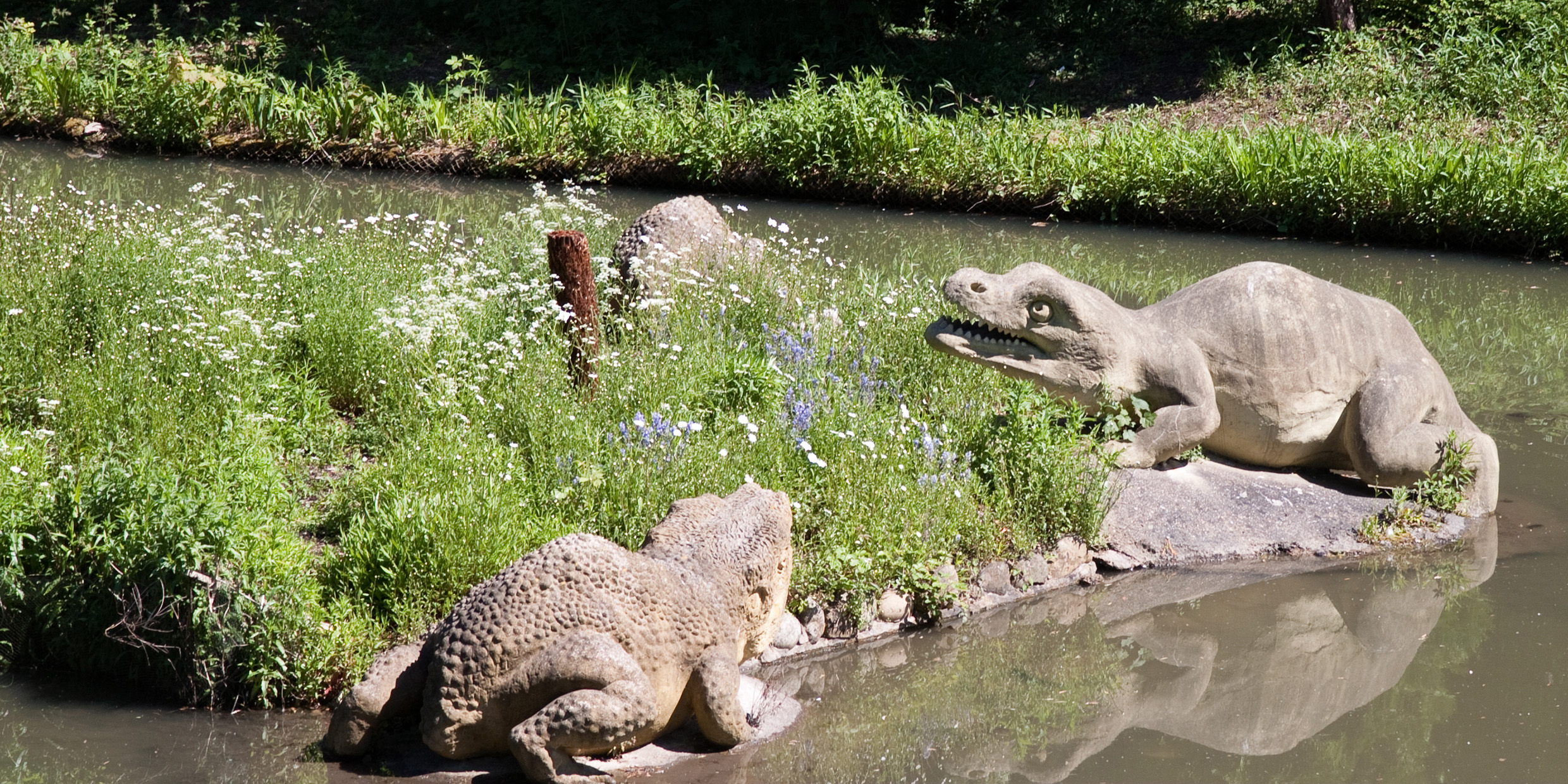Originally published 13 July 1987
As the writer John McPhee has pointed out, geologists inhabit scenes that no one ever saw — mountains, forests, rivers, and archipelagos long vanished from the face of the Earth. No, not vanished — almost vanished.
If some fragment of the scene has remained in the crust of the Earth, and if the forces that transform the crust have brought that fragment into view, then the geologist goes out, says McPhee, “with his hammer and his sandwich, his magnifying glass and his imagination” and rebuilds the mountains, the forests, the rivers, and the archipelagos.
With only a little imagination and half a sandwich even the amateur geologist can rebuild vanished geographies.
On a hilltop near my home in Easton, Massachusetts, there is an outcrop of 300 million-year-old sandstone. The strata, or layers, in the rock are tipped and curved, this way and that, and some layers are truncated and capped with other layers at a different angle. The impression is one of a paisley-like cloth, a pattern of weaves and swirls.
Clearly, the deposition of these strata was the work of water, acting on grains of sand, building up layers that shifted with moving currents. The sand was very likely deposited in the channel of a meandering river, perhaps near the shore of an ancient continent.
The Narragansett Basin
At other places nearby, in Mansfield for example, these sandstones contain layers of low-grade coal. Coal is made from organic matter, rich in the element carbon, typically deposited on the floor of a swampy forest, compressed by burial and transformed by time. So the banks of my imagined river were evidently part of a forested swamp which 300 million years ago covered part of what is now the Narragansett Basin. The coal deposits here and elsewhere give the name to the geological era when the forests flourished — the Carboniferous Period.
In the Carboniferous Period, New England was part of a continent that embraced North America, Greenland, and Northern Europe. The continent lay somewhere near the Earth’s equator. New England was mostly upland country, but to the east and west of us were broad areas of tropical swamp.
Robert Gastaldo, a geologist at Auburn University in Alabama, recently completed one of the most extensive reconstructions yet of a Carboniferous swamp community. He did his research in northeastern Alabama, where surface mining of coal has uncovered a wide cross-section of an ancient forest. The fossilized trunks of many trees still stand vertically, embedded in peat. For almost the first time, Gastaldo was able to study the plant life of the Carboniferous swamps in situ, and discover the relationships between the plants as they grew. Taking into account regional differences in geography, his reconstruction helps fill out the picture of my river valley in the Narragansett Basin of 300 million years ago.
This, then, is the imagined landscape. At the side of a meandering river, currents have built up a natural levee of layered sand and silt, the layers swirled this way and that by moving water. On the relatively dry soil of the levee grows a rich diversity of plants. The largest of these are towering spore-bearing trees called lycophytes, with rasp-like trunks, relatives of today’s tiny club-mosses.
Under the lycophyte canopy are tree-sized ferns and reed-like plants resembling today’s horsetails. Nearer to the ground is a rich undergrowth of spore-bearing ferns, seed ferns (the first plants to reproduce with seeds rather than spores), and plants resembling reeds and rushes. There are no flowering plants, no conifers: those evolutionary developments still lie in the future.
A diversity of animals
Behind the levee, away from the river, the land is lower and wetter, especially when the river is at flood stage. In this standing-water environment plant life is less diverse. The raspy trunks of lycophytes rise out of the swamp like pillars, supporting high overhead a dense canopy of leaves and branches. Fallen tree trunks are everywhere.
The forest supports a lively diversity of animals. Dragonflies and mayflies dart among the fronds; some of the dragonflies have wingspans of more than a foot. Cockroaches creep on fallen logs. The Carboniferous is the golden age of amphibians: Only recently, geologically speaking, the amphibians have perfected the apparatus — gills to lungs, fins to limbs — for a transition from sea to shore.
Compared to their modern cousins, — toads, frogs, and salamanders — many Carboniferous amphibians are huge and frightening. Among the most impressive of them are the lumbering labyrinthodonts, fat, short-legged amphibians that wallow alligator-like on the floor of the swamp, basking in sunlight where they can find it, or slinking through shadowy water, preying upon fish, insects, and each other.
This is the unseen landscape, gone for 300 million years, that once occupied my little corner of North America, a landscape I can reconstruct because of the patient work of geologists like Robert Gastaldo, who work with hammer and sandwich, magnifying glass and imagination, searching for fragments of the past that have endured into the present. This is the forested swamp, green with vanished trees and ferns, buzzing and splashing with forms of life long gone, that is evoked by an outcrop of swirly river-banked sandstone on a hilltop in Massachusetts.



